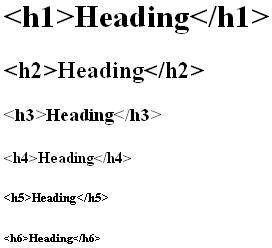Using Heading Tags for Better SEO

Headers are fickle things. Sometimes they are wanted. Other times they aren’t. Aside from the fact that most successful blogs and websites use them, it’s a reasonable question for one to ask what use they have when it comes to search engine marketing. Other than to help break up and organize content, which make pages more readable for visitors, headers are something the all-powerful Google search engine algorithms love to see along with unique and relevant information. Make your Web pages readable, relevant and offer a unique use experience, and Google will reward your efforts with higher search engine rankings, lower pay-per-click costs and better organic search engine results.
H1 and H2 Tags Help Target Key Phrases
Using header tags help search engines and other spiders to better target keyword phrases when assessing the relevancy of Web pages. While H1 tags only should be used for the very top header, H2 tags can be used throughout but should help to organize the content. Placing them before one or more paragraphs that use those key phrases will help with SEO efforts. But if using them randomly throughout, the result will be much less and potentially useless. So H1 tags go at the very top and grab the reader’s attention. The H2 tags go throughout as often as reasonably necessary and to help organize the information.
Good SEO Means Better Online Performance
When using headers properly and making it easier for page visitors to read information and have a truly unique online experience, Google, Bing and other search engines will improve rankings for paid and organic advertising. It also helps from a standpoint of good writing to help ensure readers don’t struggle to take in the information intended and will check out more areas of a website. The longer visitors stay on Web pages and websites, the better they will rank on Google, Bing and other search engines.
Do you give much thought to how headers are used on your website?

